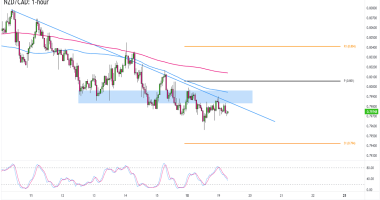By Subhadip Sircar
An anomaly in India’s currency forwards market is piquing the curiosity of traders.
The 12-month implied yields on rupee forwards, which reflect interest-rate differentials between India and the U.S., surged to near a two-year high this month even after the Reserve Bank of India cut interest rates for a third time this year.
One version argues the advance may be related to tax payments impacting currency liquidity. While forward pricing typically represents the interest-rate differential between two countries, they are also influenced by demand and supply for the currencies.
As companies pay taxes, it drains cash from India’s financial system, leading to a mismatch in the foreign-exchange market, which then pushes up the forward premiums, according to Madhavi Arora, an economist at Edelweiss Securities Ltd.
Kotak Securities Ltd. points to the hand of RBI.
 Bloomberg
BloombergAs the implied yields on the forwards get higher though, there is more incentive for carry traders to be short the dollar and long the rupee.
There is speculation that the RBI has been intervening heavily in the spot market to buy dollars to curb rupee appreciation, and then doing what is commonly known as a sell-buy swap in the forwards market to offset the liquidity impact, according to Anindya Banerjee, a currency strategist at Kotak.
Under the arrangement, the RBI buys dollars in the spot market to inject rupee. To offset the inflows of the Indian currency, it goes to the forwards market and sells these greenbacks, for say a three-month period, to banks. Through the process, it takes back the rupee liquidity now and will get its dollars in return after three months.
In order to do that, the central bank probably offered a bit more premium to the banks, hence driving up the 12-month implied yield on the forwards, traders said.
The RBI’s official stance is that it doesn’t target an exchange-rate level but intervenes to contain volatility. The central bank doesn’t comment on its day-to-day foreign exchange operations.
As the implied yields on the forwards get higher though, there is more incentive for carry traders to be short the dollar and long the rupee, Banerjee wrote in a note. If RBI intervention ends up doing that, then it could be a self-defeating move, he wrote.
The 12-month implied yield on the forwards rose 51 basis points in June to 4.50%. The benchmark 10-year Indian bond yields, though, has fallen 22 basis points over the same period.









